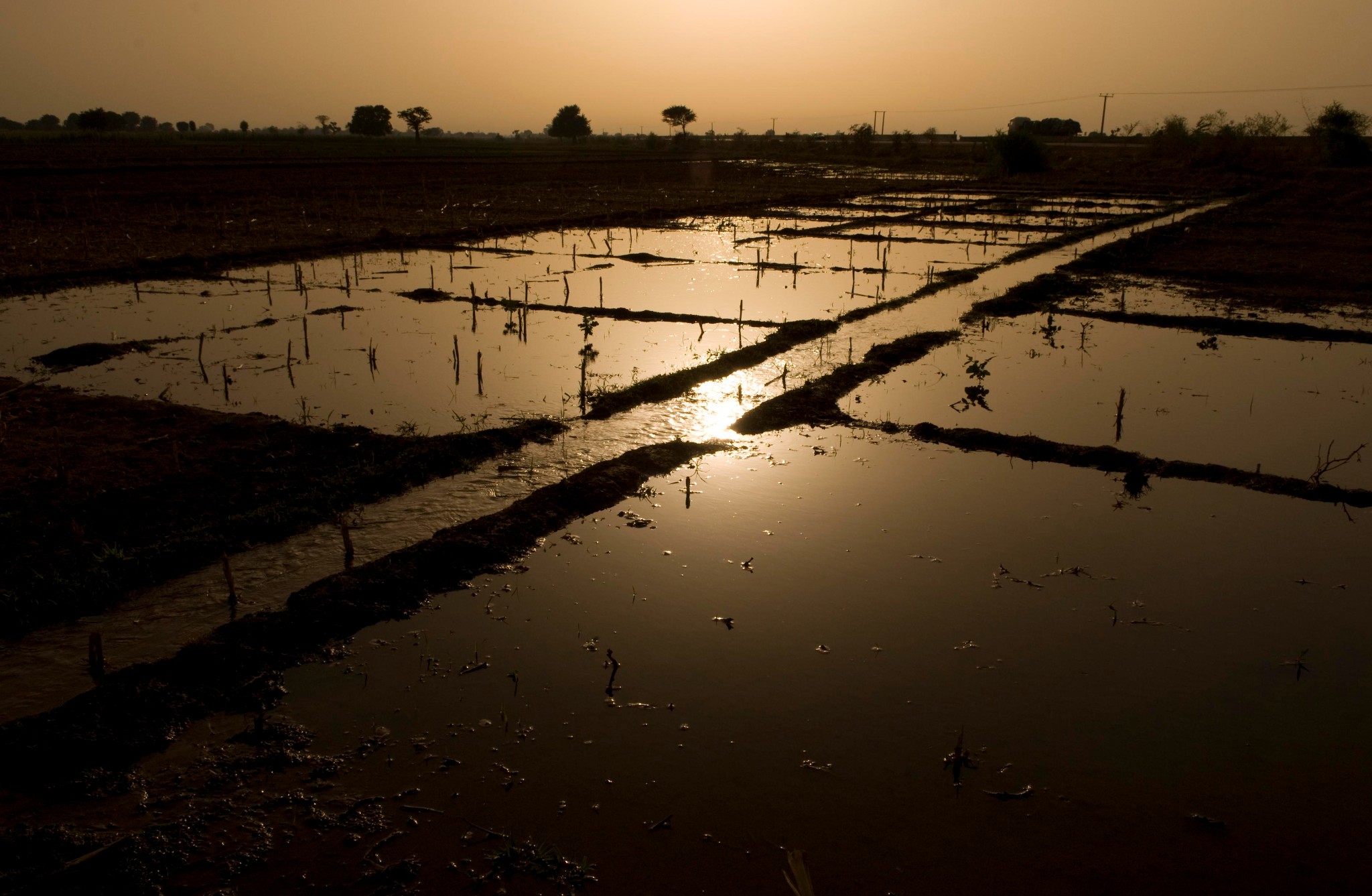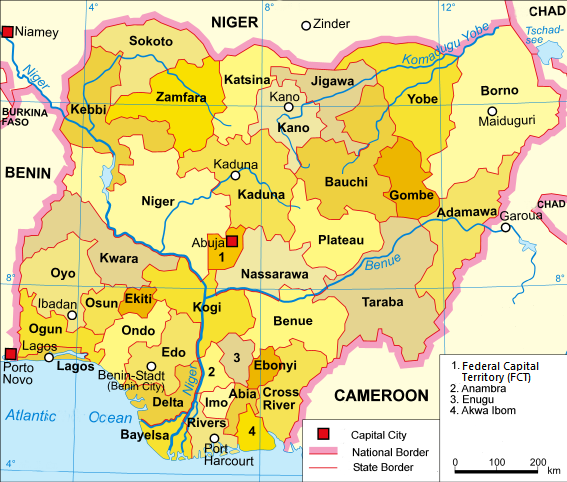 CC c/o World Bank Photo Collection on Flickr. License: https://bit.ly/2YDHstH.
CC c/o World Bank Photo Collection on Flickr. License: https://bit.ly/2YDHstH.
Nigeria, Climate Change, and the Future of Food
Nigerian President Muhammadu Buhari recently revealed his country can no longer afford to import food. Nigeria has long relied on foreign supplies, spending approximately $5 billion of the $35 billion Africa pays annually for food imports. On May 24, Buhari called on Nigeria’s farmers to make up the deficit by increasing agricultural production.
While the economic repercussions of COVID-19 prevent Nigeria from importing food, the effects of climate change mean farmers cannot respond to Buhari’s call. This demonstrates the devastating extent to which the coronavirus and climate change work hand-in-hand to exacerbate existing inequities, this time in our global food system. As Africa’s most populous state—with a population set to double to 400 million by 2050—Nigeria’s food insecurity could well be a harbinger of things to come for sub-Saharan Africa as a whole.
Climate Change and Agricultural Production
Neither food security nor food imports are new issues in Nigeria. In 2018, an estimated 25 million Nigerians were undernourished—up by 180 percent over the previous decade. Out of an annual demand for wheat of 3 million tons, only about 100,000 are produced in-country. Nor is this the first time Buhari has called for increased domestic production: since assuming the presidency in 2015, Buhari has periodically limited import financing to promote Nigerian agriculture. These attempts, however, have done nothing to address the underlying causes of declining agricultural capacity.
Climate change is the most glaring of these causes. Nigerian farmers continue to rely primarily on rain-fed agriculture—meaning they depend on rainfall for water. This leaves them especially vulnerable to increasingly unpredictable and extreme weather events like flooding, heat waves, and droughts. Not only do such events destabilize precipitation patterns: they also lead to soil degradation and lower crop yields. The effects of climate change on agricultural production are exacerbated by the fact around 70 percent of Nigerians are smallholder farmers with relatively low-level technologies.
Extreme temperatures and unpredictable precipitation patterns threaten the productivity of more than half of Nigeria’s staple crops. The one region where climate change would actually enhance the value of crops is in northern Nigeria—including Borno, Yobe, Kaduna, Kano, and Sokoto states (see map, below). Beset by a long-raging jihadist insurgency, however, northeastern Nigerian states are experiencing drastic declines in agricultural production. Between 2010 and 2015, for example, the production of millet in Borno state (where Boko Haram is most active) declined by 55 percent.

Political Map of the 36 States of Nigeria; Wikimedia Commons image courtesy of Domenico-de-ga, translated and adapted by xandar
Ripple Effects
Jihadist activity in northeastern Nigeria demonstrates the vicious feedback loop of climate change and armed conflict. Climate-induced shortages of water and farmland heighten the risk of violence; insecurity contributes to such shortages by making areas harder to farm. Terrorist organizations like Boko Haram and its offshoot, the Islamic State in West Africa, also take advantage of populations left vulnerable by climate change. The June 10 massacre in Borno state is the latest example of this tragic pattern.
Another ripple effect of climate change is the need for food aid. Although often well-intentioned, food aid in sub-Saharan Africa has historically been plagued by logistical and corruption issues. It is also unsustainable in the long run, as revealed by the current push to provide food in the face of COVID-19. Attempts by state authorities, NGOs, and international agencies like the World Food Programme (WFP) are already showing signs of strain.
Enter COVID
The coronavirus has transformed the ripple effects of climate change into a wave. According to the WFP, at least 265 million people in 55 countries are at risk of going hungry in 2020—almost twice as many as in 2019. Most of these people live in sub-Saharan Africa. Although experts agree there should be enough food to feed the world this year, the question is whether that food can be harvested on time and sent to those who need it. COVID-19 cuts off access to farmland and devastates economies, preventing countries like Nigeria from importing needed food.
How to Build Climate Resilience
Food aid is necessary to prevent catastrophe in the short term, but any long-term solutions must emphasize climate resilience. Promising avenues for resilience-building include: investment and land management policies aimed at arable land expansion, public-private partnerships (PPPs) embracing digitization, and greater intra-African trade. One example of an encouraging Nigerian PPP is agCelerant, a business development venture connecting smallholder farmers with credit lines and other financial tools. Investing in these measures now will make the next generation of Nigerian farmers better able to answer the call for greater domestic production.





